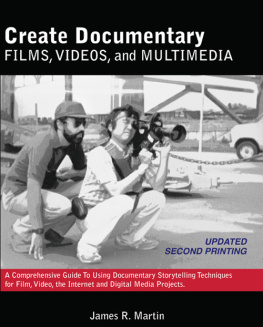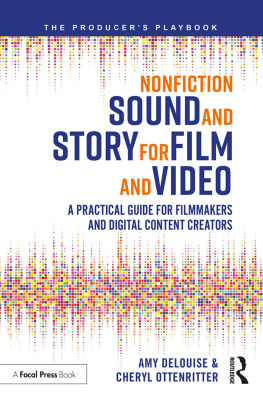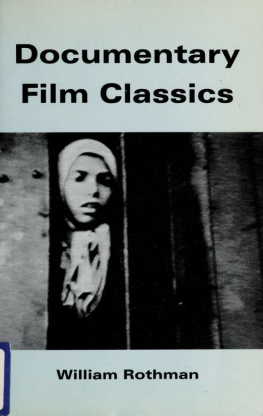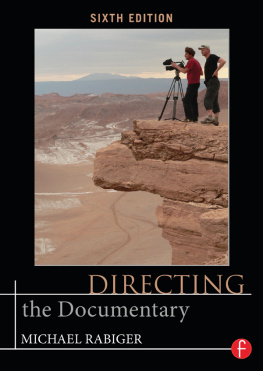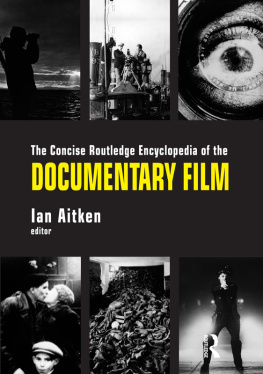Create Documentary Films,
Videos and Multimedia
A Comprehensive guide To Using Documentary
Storytelling Techniques for Film, Video,
Internet and Digital Media Projects
By
James R Martin
Real Deal Press Orlando Florida
Create Documentary Films, Videos and Multimedia
Copyright 2010, 2011 James R Martin Updated Second Printing (Including Errata) All rights reserved. No part of this book shall be reproduced, stored in a retrieval system, or transmitted by an means, electronic, mechanical, photocopying, recording or otherwise, without written permission from the publisher. No patent liability is assumed with respect to the use of the information contained herein. Although every precaution has been taken in the preparation of this book, the publisher and author assume no responsibility for errors or omissions. Nor is any liability assumed for damages resulting from the use of the information contained herein.
Publishers CataloginginPublication
(Provided by Quality Books, Inc.)
Martin, James R.
Create documentary films, videos and multimedia : a
comprehensive guide to using documentary storytelling
techniques for film, video, Internet, and digital media
projects / by James R. Martin. 1st ed.
p. cm.
Includes bibliographical references and index.
LCCN 2010905907
ISBN13: 9780982702307
ISBN10: 0982702302
1. Documentary filmsProduction and direction.
2. Video recordingsProduction and direction.
3. Multimedia (Art)Production and direction.
4. Storytelling. I. Title.
PN1995.9.D6M37 2010 070.18
QBI10600098
Cover Design Aaron J.H. Martin
Trademarks
All terms mentioned in this book that are known to be trademarks or service marks have been appropriately capitalized. The author and publisher can not attest to the accuracy of this information. Use of a term in this book should not be regarded as affecting the validity of any trademark or service mark.
Photographs and Illustrations
Unless other wise noted and credited all photographs and illustrations are original copyrighted work of the author or public domain.
Fair Use Notice
This book may contain material the use of which has not always been specifically authorized by the copyright owner. Such material is being used in an effort to educationally advance understanding of environmental, political, human rights, economic, democratic, scientific, social justice and documentary issues etc. We believe this constitutes a fair use of any such copyrighted materials as provided for in section 107 of the US copyright law.
Warning and Disclaimer
Every effort has been made to make this book as complete and as accurate as possible, but no warranty or fitness is implied. The author and the publisher shall have neither liability nor responsibility to any person or entity with respect to any loss or damage arising from the information contained in this book.
Acknowledgements
This book is dedicated to my wife Karen (1953 to 1990), who was always supportive and would have been very happy and proud for us. It is also dedicated to my son Aaron J. H. Martin.
I am a part of all that I have met. Tennyson, Ulysses. Thanks to all my students for the past 30 years. We exchanged experiences and ideas in a hopefully mutually beneficial learning process. Thanks to everyone who helped me with the initial proof reading of this book. Second printing proof reading and editing may be fully blamed on the author. Finally, thanks to all my friends and colleagues at Full Sail University in Winter Park, Florida.
About The Author
James R (Jim) Martin is an Emmy, award winning Producer, Writer, Director of Film, Television, Video, Multimedia and Digital Media Productions. He is currently Director of the Documentary Filmmaking Course at Full Sail University in Winter Park, Florida. Prior to coming to Full Sail University, Professor Martin taught film production at Columbia College in Chicago for 13 years. He also taught Directing at University of Central Florida as adjunct faculty.
Credits include two Emmy nominations and an Emmy Award for Nationally aired PBS documentary Firedup Public Housing is My Home and Chicago Film Festival, Golden Plaque for Best Network Documentary for Emmy nominee, Wrapped In Steel also seen nationally on PBS stations. 2008 Telly Award of Best Short Documentary on MakeAWish Foundation.
Jim Martin has worked as an editor and cameraman in both film and video production and he has taught film and video production for thirty years. He has written, produced and directed a feature film, Public Television documentaries, commercials, feature short films, corporate and industrial films and videos.
HOW TO USE THIS BOOK
This book is published as an interactive, multimedia publication. It has two main components, a print version and a digital version. The print (hard copy) and the digital version may be used together or separately. It is recommended that they be used together. Many of the photographs, illustrations and film clips included or referred to in the print version become interactive in the digital version. For example: if the cursor turns into a hand when over a photograph, clicking on the photograph may bring up an audio recording, video or other presentation.
Each chapter in Create Documentary Films, Videos and Multimedia covers a specific area of documentary production.
Case studies cover a range of documentary projects and actual documentaries. The case studies are first hand accounts that detail the preproduction, production and postproduction of each production.
Documentary storytelling methods may also be used for all types of presentations, exhibits and events. Chapters in this book detail how to apply theses techniques in a diverse number of situations.
The Filmography of recommended documentary films is comprised of about one hundred documentary films of al l types and are meant to give examples of the wide range of storytelling applications that fall under the documentary and nonfiction genres.
For detailed reviews go to JRMartinmedia.com (Reviews) .
CreateDocumentaryFilms.com
| JRMartinMedia.com
|
TABLE OF CONTENTS
This chapter is a brief introduction, discussion and summary of the history and evolution of the concept of documentary and nonfiction filmmaking.
To this end it is necessary to look at the many issues that deal with the telling or reporting of nonfiction realities via the many methods of conveying such realities in films, videos, books, magazines, newspapers, television and the internet. These issues deal with personal and public expectations as to how information is reported and disseminated in our culture.
CHAPTER ONE

(Above) Nyla and Child Nanook of the North New York Museum of Modern Art
CHAPTER 1
DOCUMENTARY/NONFICTION
STORYTELLING
Chapter Highlights

